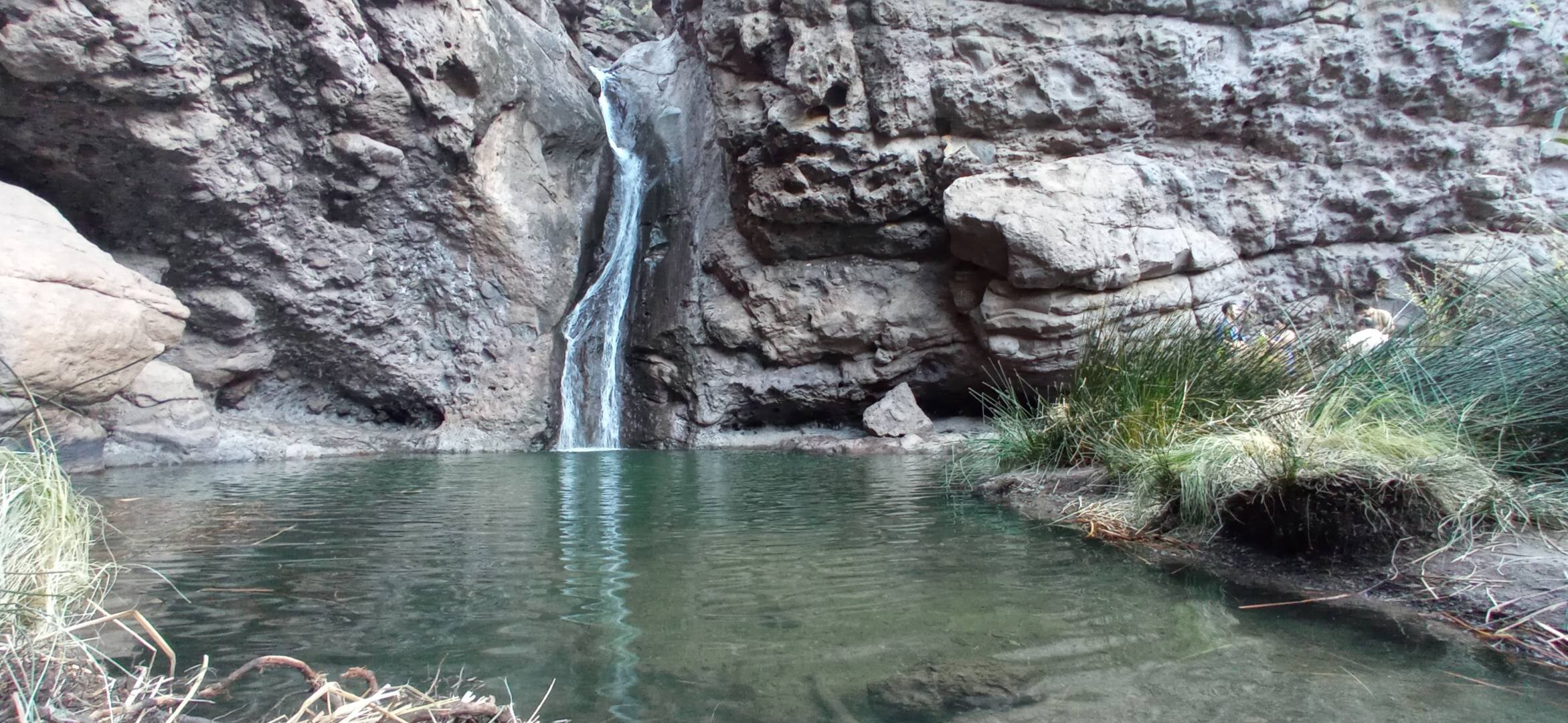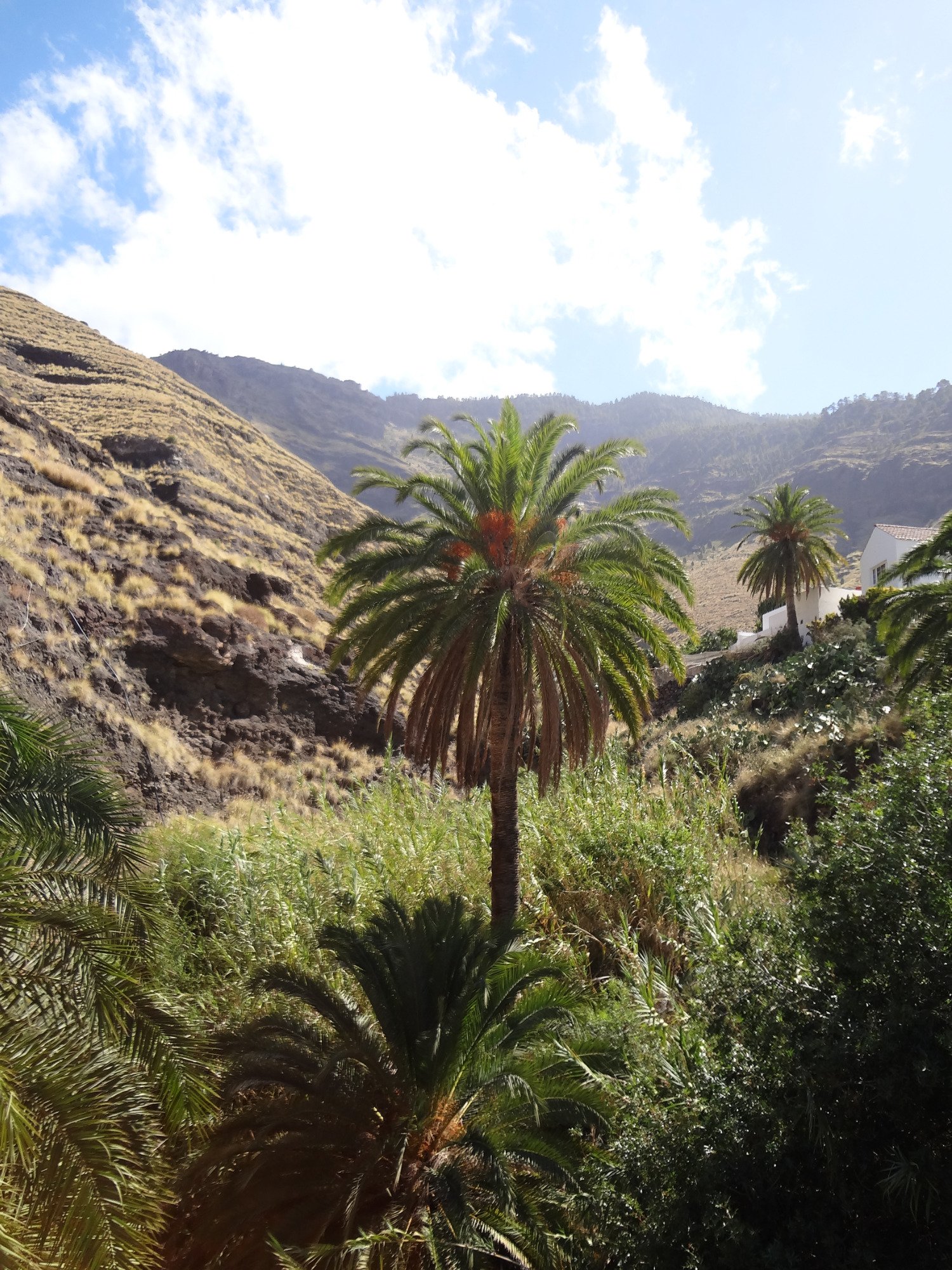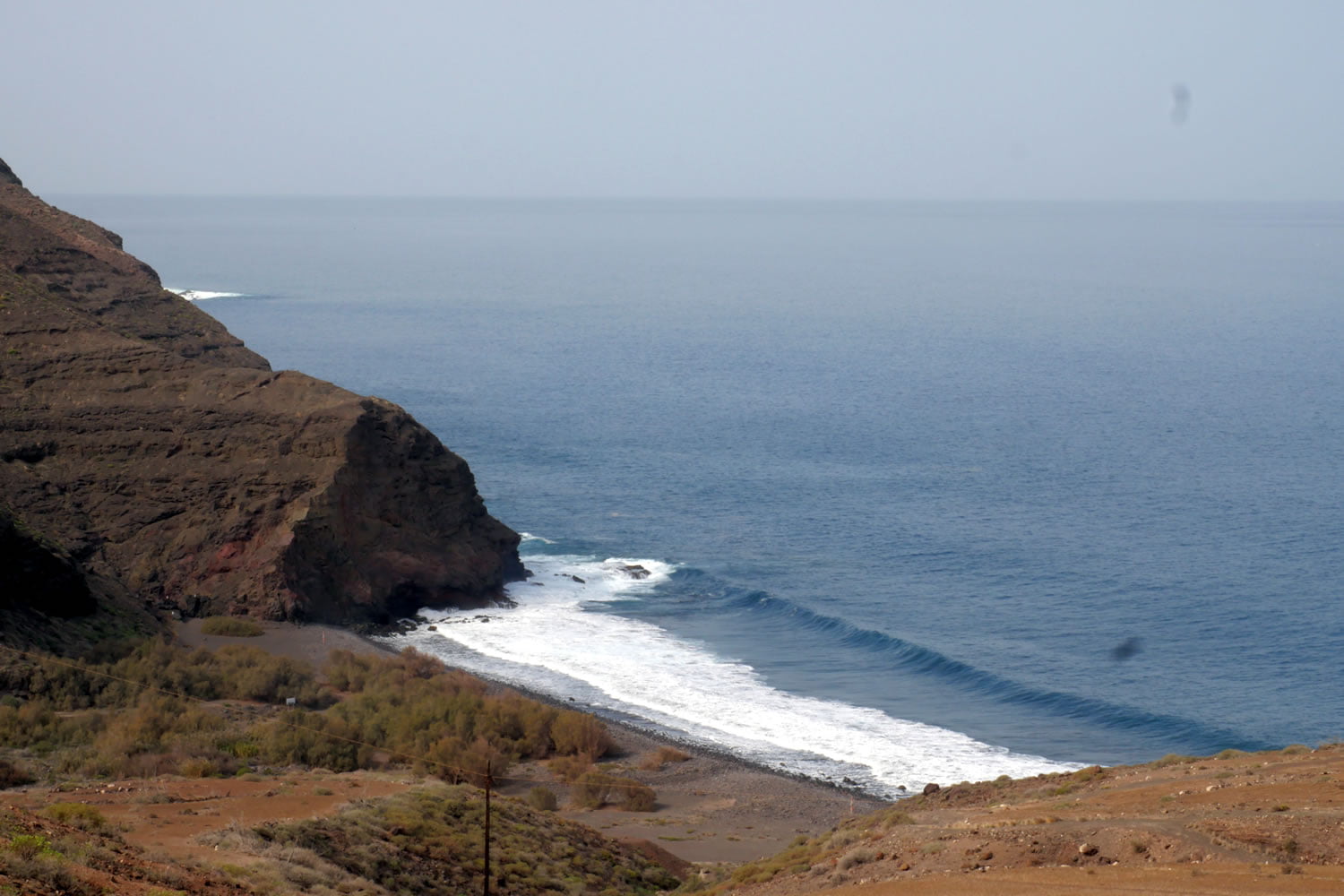This small rural village, located in the northwest of the island, is surrounded by mountainous landscapes and ravines that create a very peaceful atmosphere far from the hustle and bustle of tourism.
This is the westernmost district of the municipality of Agaete, about 30 minutes from the town centre. It has a markedly agricultural and livestock character. This neighbourhood stands out for the existence of companies producing agri-food products such as cheese and goat yoghurt, as well as for the incipient development of Rural Tourism, with several traditional Canarian style houses dedicated to this type of tourist product.
El Risco is famous among locals for its access to Charco Azul, a series of natural pools of crystal-clear water formed in the course of a stream. The hike to Charco Azul is a small challenge that rewards you with an unspoilt and rarely visited landscape. It is not signposted like other popular trails on the island, so it remains a fairly secret site.

What to do in El Risco (Agaete)?
The village of El Risco has a rustic charm. The whitewashed houses, surrounded by palm and banana trees, give a sense of authenticity that is hard to find elsewhere on the island. You can also sample the local food in the small bars and taverns in the surrounding area, which often serve traditional local dishes.
The Agaete Town Council and the Department of Local Development and Tourism, through the grant ‘La Cumbre Vive’, has flown over the neighbourhood of El Risco, the westernmost urban area of the municipality.
Hiking to Charco Azul.
El Charco Azul is a hidden gem in Gran Canaria, located in the El Risco ravine, near the municipality of Agaete. This place offers a unique experience of nature in its purest form, perfect for lovers of hiking and tranquillity.
What to see in Charco Azul?
- The Trail: The hike to Charco Azul is an adventure in itself. The trail, which takes about 30-45 minutes from the start, runs through a beautiful landscape of native vegetation, imposing rock walls and small waterfalls. Being a less touristy place, the trail maintains its natural essence, without too many interventions.

-
The Waterfalls and Pools: At the end of the route you will come across the Charco Azul, a natural pool formed by a waterfall that falls from the top of the mountain. Depending on the time of year, the water flow may vary, but generally you can enjoy a refreshing swim in its crystal clear waters. During the rains, the place is transformed, filling with water and creating an even more impressive atmosphere.

-
Local Fauna and Flora: The area is home to a rich variety of plants and animals typical of the Canarian ravines. You can see everything from cacti and palm trees to small native birds. It is an excellent area for those who enjoy observing the flora and fauna in their natural environment.

-
Quiet environment: Being lesser known, Charco Azul offers a peace that is hard to find in tourist spots. It is ideal for relaxing, taking pictures and enjoying the serenity surrounded by mountains and water.
Tips: Access can be tricky and the trail has some rocky sections, so it is advisable to bring good footwear and plenty of water. Also, after heavy rain, the trail can be slippery, so be aware of the weather conditions before you visit.
El Risco beach.
The
Risco beach in Agaete is an ideal place for those looking for a quiet and uncrowded beach in Gran Canaria. This beach, located near the small village of El Risco in the northwest of the island, is off the beaten tourist track and offers an authentic and natural experience.
For
access to the beach requires a 10-15 minute walk from El Risco. Although it is a simple route, the terrain is stony and requires comfortable shoes. The trail passes through ravine landscapes and native vegetation, which enriches the experience for nature lovers. Vehicles have also recently been allowed to drive almost to the beach, although we do not recommend this as we want to keep the beach as unvisited as possible and to respect the carbon footprint of the area.

What to see on the Risco beach?
- It is a beach of volcanic stones and gravel, which gives it a very natural and rustic appearance, with a preserved environment and no buildings.
- The beach is surrounded by an impressive volcanic landscape, with mountains and cliffs, and offers unique panoramic views of the Atlantic Ocean.
- Quietness is one of its main characteristics; it is usually uncrowded, ideal for those looking for a beach experience in solitude or in direct contact with nature. We would also like to highlight its sunsets, which are beautiful and spectacular.
What to do on the Risco beach?
- Snorkelling: Its crystal clear waters, especially on calm sea days, are perfect for snorkelling. The beach offers a good opportunity to observe fish and rock formations underwater.
- Hiking and Nature: Being close to other trails in the municipality of Agaete, the beach can form part of a wider hiking route in the northwest of the island, combining sea and mountains.
Precautions:
- Visitors are advised to bring water, food and sunscreen, as there are no facilities nearby.
- The swell can be strong, especially in winter, so it is important to exercise caution when swimming.
- Access to the beach can be difficult after heavy rain, as the path can become slippery.
- Take care with the timetable for accessing and leaving the beach, as the path can be complicated when walking at night, as there is no lighting on the path.
El Riso beach is an ideal option for those looking for a different kind of getaway in Gran Canaria, a place where nature is the protagonist and where you can enjoy the coast in its purest state.
Eating in El Risco.
Our recommendation when it comes to eating is to go to the village of Agaete, there you will find numerous restaurants where you can eat typical Canarian food, in the Risco there is only one bar that we dare NOT recommend.